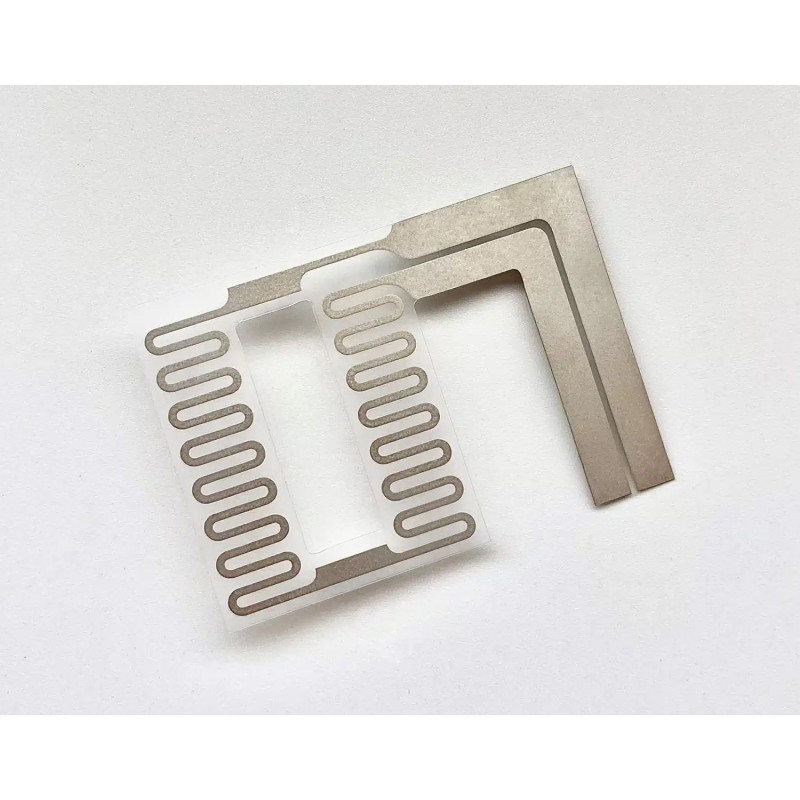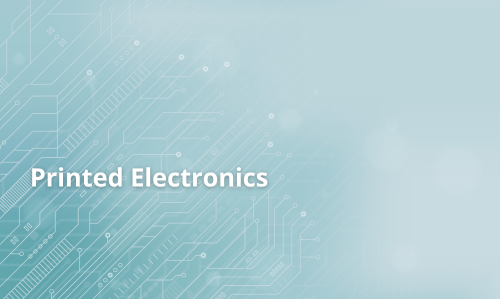

Category







Photos are for informational purposes only. View product specification
please use latin characters
Alper offers its PET resistors printed not only with carbon ink, but also with a silver-based ink blend. Heating elements printed with silver ink are preferred due to the greater precision of the final result.
In fact, when a customer's design has a specific shape that requires precision and attention to detail, silver ink heating paths are preferred. Alper can reproduce all shapes, even the most complex ones. Alper uses conductive and innovative silver inks for screen printing. The choice of ink and its conductivity determine the heater's performance, which is why Alper selects only the highest quality raw materials that allow the heaters to perform at their best.
Alper utilizes printing technologies that have been established over the years, and combined with innovative approaches, has the potential to enter new sectors, such as Printed Electronics. One of the most interesting applications of this technology is silver ink-printed resistors. These heaters are manufactured using printing and deposition processes, which allow for extremely flexible heating elements that can be customized to suit a variety of applications.
The silver ink used to print these resistors consists of nanometric silver particles suspended in a liquid. This type of ink can adhere to a wide range of surfaces, including plastic substrates such as PET, which is used by Alper. After printing on the PET substrate, the ink is baked to remove the volatile component and consolidate the silver particles into a compact and flexible structure. The result is a highly conductive and flexible resist that can be easily integrated into a wide range of applications. There are many applications for heating resists screen-printed with silver ink. Thanks to their flexibility and ability to adapt to non-flat surfaces, these heating elements are particularly useful in applications where flexibility is required. In summary, silver ink printed resistances represent one of the most interesting applications of Printed Electronics, and Alper is proud to be a pioneer at the European level in promoting this still little-known technology. Thanks to their flexibility, adaptability, and ease of integration, these heaters are poised to revolutionize numerous sectors, from medicine to wearable technology.
Tests in accordance with standards EN 60335-1 and EN 50106.
Compliance with regulations S.I. 2016 No. 1101 (Electrical Equipment (Safety) Regulations 2016).
Complies with BS EN 60335-1, BS EN 50106.
Complies with RoHS and REACH.
Are you interested in this product? Do you need additional information or individual pricing?
Alper offers its PET resistors printed not only with carbon ink, but also with a silver-based ink blend. Heating elements printed with silver ink are preferred due to the greater precision of the final result.
In fact, when a customer's design has a specific shape that requires precision and attention to detail, silver ink heating paths are preferred. Alper can reproduce all shapes, even the most complex ones. Alper uses conductive and innovative silver inks for screen printing. The choice of ink and its conductivity determine the heater's performance, which is why Alper selects only the highest quality raw materials that allow the heaters to perform at their best.
Alper utilizes printing technologies that have been established over the years, and combined with innovative approaches, has the potential to enter new sectors, such as Printed Electronics. One of the most interesting applications of this technology is silver ink-printed resistors. These heaters are manufactured using printing and deposition processes, which allow for extremely flexible heating elements that can be customized to suit a variety of applications.
The silver ink used to print these resistors consists of nanometric silver particles suspended in a liquid. This type of ink can adhere to a wide range of surfaces, including plastic substrates such as PET, which is used by Alper. After printing on the PET substrate, the ink is baked to remove the volatile component and consolidate the silver particles into a compact and flexible structure. The result is a highly conductive and flexible resist that can be easily integrated into a wide range of applications. There are many applications for heating resists screen-printed with silver ink. Thanks to their flexibility and ability to adapt to non-flat surfaces, these heating elements are particularly useful in applications where flexibility is required. In summary, silver ink printed resistances represent one of the most interesting applications of Printed Electronics, and Alper is proud to be a pioneer at the European level in promoting this still little-known technology. Thanks to their flexibility, adaptability, and ease of integration, these heaters are poised to revolutionize numerous sectors, from medicine to wearable technology.
Tests in accordance with standards EN 60335-1 and EN 50106.
Compliance with regulations S.I. 2016 No. 1101 (Electrical Equipment (Safety) Regulations 2016).
Complies with BS EN 60335-1, BS EN 50106.
Complies with RoHS and REACH.
 Printed Electronics
Printed Electronics
Your review appreciation cannot be sent
Report comment
Report sent
Your report cannot be sent
Write your review
Review sent
Your review cannot be sent
